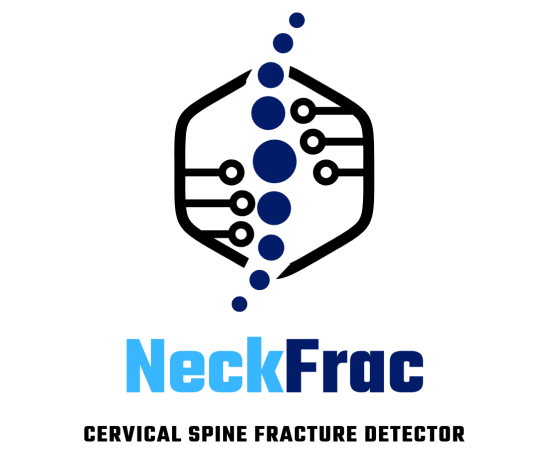NeckFrac: Deep Learning Powered Cervical Spine Fracture Detector
"NeckFrac", a deep learning model trained on over 2000 patients Cervical Spine CT scans, aimed to quickly detect and determine the location of vertebral fractures, which is essential to prevent neurologic deterioration and paralysis after trauma.
Our mission is “Quicker, better, more accurate diagnosis to save lives.” Picturing a scenario, a patient was admitted to the Emergency Room (ER) due to severe neck injury, and the ER doctors ordered CT scans to identify the fracture and next steps. Traditionally, the process of uploading CT scans and radiologist read through scans, takes 30 mins on average with the first priority. With NeckFrac, this process will take less than 10 mins, which saves precious time for patient treatment.
The data for our project is provided by RSNA (Radiological Society of North America) and publicly available. All patients’ personal information has been removed. This dataset is 343 GB, which includes train.csv, train CT images (2019 patients), bounding boxes (235 patients), and segmentation labeled by experts (87 patients). CT scans are in the format as dicom (Digital Imaging and Communications in Medicine) and segmentation are in the format as nii (The Neuroimaging Informatics Technology Initiative). Handling medical images has been challenging and the medical research field has been struggling to have well labeled dataset to train deep learning models for cervical spine fracture, which is our project novelty at.
NeckFrac is an intricate deep learning model dedicated to cervical spine fracture detection, trained on over 2000 patents, and ensembled the EffNet and 2.5D UNet + bi-GRU model to predict the probability of bone fracture. The training pipeline starts with loading data, feature engineering: Hounsfield units (HU) rescale, pixel normalization, image augmentation (flip, rotate, noise, affine), train models, evaluation performance, and inference. After iteration of training, our model achieved sensitivity 98%. As the false negative is more fatal to patients, we prioritize the recall over precision, thus we introduce the F2 metric to evaluate the performance, which is 80%. For the business impact, our model reached higher (+5%) sensitivity compared to radiologists and higher (+22%) sensitivity compared to the AIdoc cervical spine fracture detector model. Most importantly, our model can return the result within 2 mins while the AIdoc model needs 3-8 mins, which beats the average in the industry.











